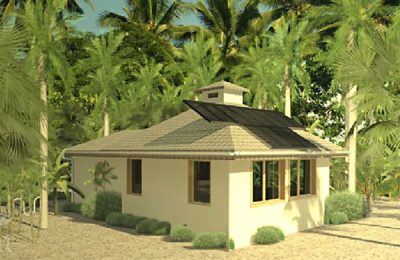CARILLO PUERTO, Q. Roo — The ingenuity of a Mexican architect has created a prototype method of building schools that could prove to be a viable, cheap and self-sustainable model for small indigenous towns.
Tania Rodríguez is the creator of School Out of a Box, which could be considered a prefabricated building, although most of the construction materials are obtained on the site where the school is erected.
What does come in the box is equipment such as batteries and solar panels. Once the box reaches its destination, raw materials common to the area and eager local workers can have a fully functional school up and running in two months’ time.
The first school built with Rodríguez’ method is located in the Quintana Roo rainforest in an indigenous village close to the city of Carrillo Puerto.
Although still a prototype, since January a carpentry course is being taught there along with English and Maya language classes.
The main building material is the wood of the chukum tree (Havardia albicans), whose resin provides waterproof insulation to the school walls. The dark-red substance has the added benefit of being antifungal.
The building’s design includes a cupola roof that allows for efficient air circulation within, explained Rodríguez. The cupola is divided in four parts: plants can be grown on two sides of the cupola’s surface, while the other two are covered in used tires for additional insulation.
The school is powered by an array of solar panels and a set of back-up storage batteries, while efficient LED lighting provides interior and exterior illumination.
A rainwater collector supplies that particular requirement, while all wastewater is treated on-site, to be used later to water the plants.
Rodríguez’ goal is to create an ecological construction model that is flexible enough to adapt to weather conditions of other areas. Her next step is to test the prototype in Chiapas.
What little financing Rodríguez has comes from the Memnosyne Institute, based in Dallas, Texas, which is dedicated to encouraging positive, peaceful global collaboration in all areas of knowledge. Despite this, the project is 100% Mexican, she said.
Rodríguez described the investment as “very small” and believes that the collaboration of Mexican investors would allow her model to be widely used.
Although still in the testing stage, Rodríguez has created also several construction manuals aimed at her Chiapas project.
Sources:




